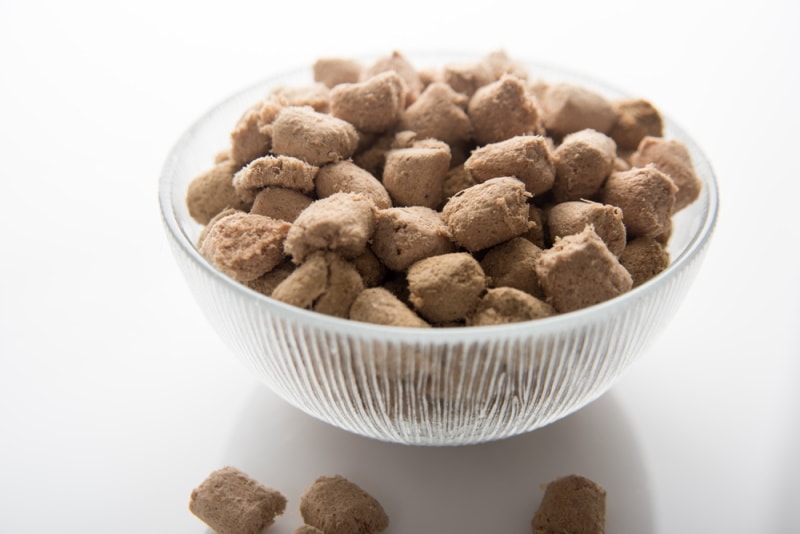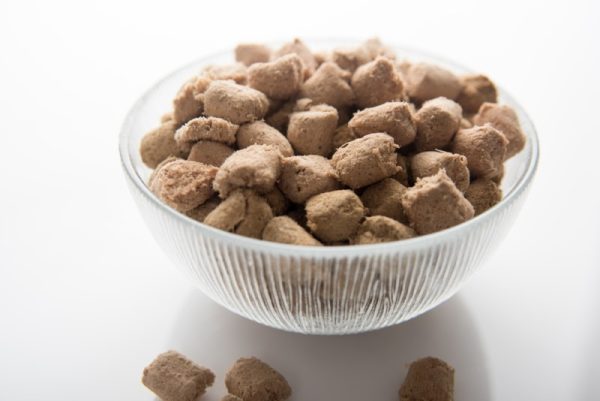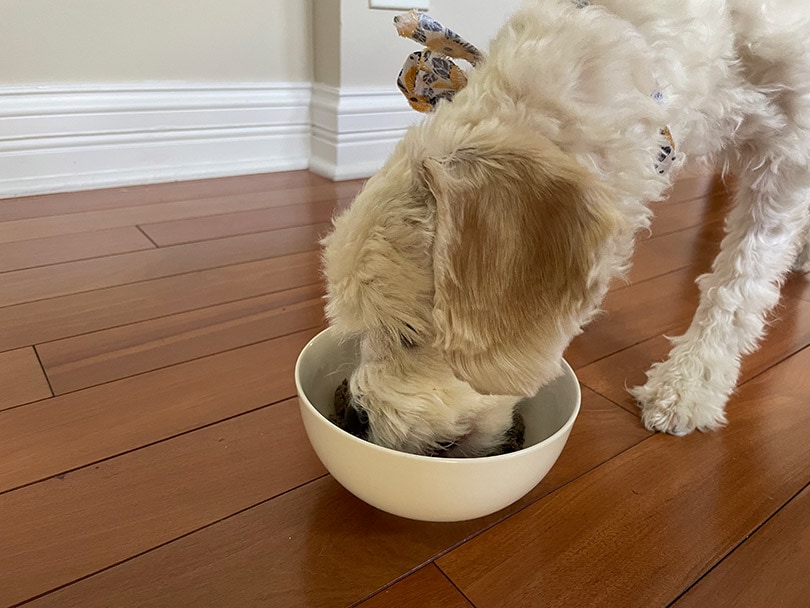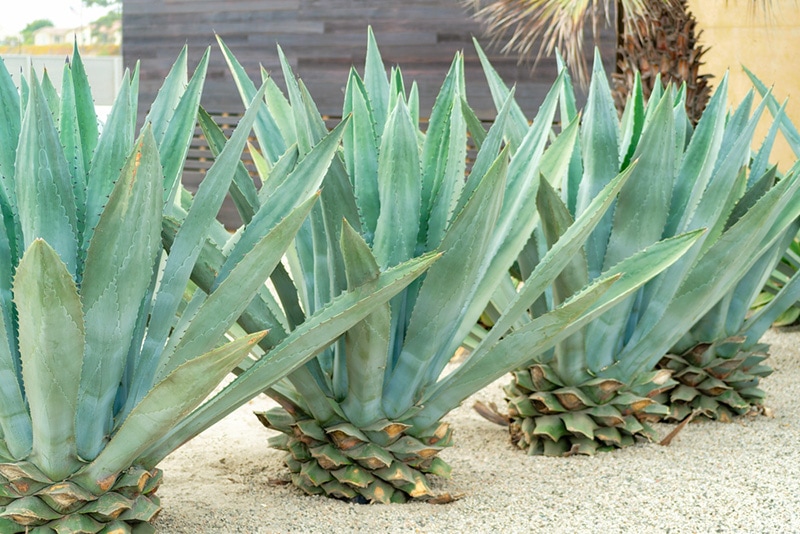Freeze-dried dog foods are becoming a popular dog food option because of their high palatability and ability to provide a raw diet rich in vital nutrients. These diets also take the guesswork out of feeding a raw diet, ensuring your dog’s nutritional needs are met without you having to balance a diet on your own.
However, there are some notable downsides to these diets as well. It’s important to fully understand the pros and cons of freeze-dried foods before switching your dog. Here’s what you need to know.
The Pros & Cons of Freeze-Dried Dog Food
1. Pro: Convenience
Some people feel that feeding their dog a raw diet is important because it mimics the type of diet that a wild canine, namely a wolf, would eat. Managing a raw diet for your dog can take a lot of time and effort, though.
Freeze-dried diets take the guesswork and difficult planning out of raw diets. While traditional raw diets require careful measuring and an appropriate combination of ingredients and supplements for proper balance, freeze-dried foods only require you to ensure you’re measuring the food correctly for your dog’s age, weight, and activity level.
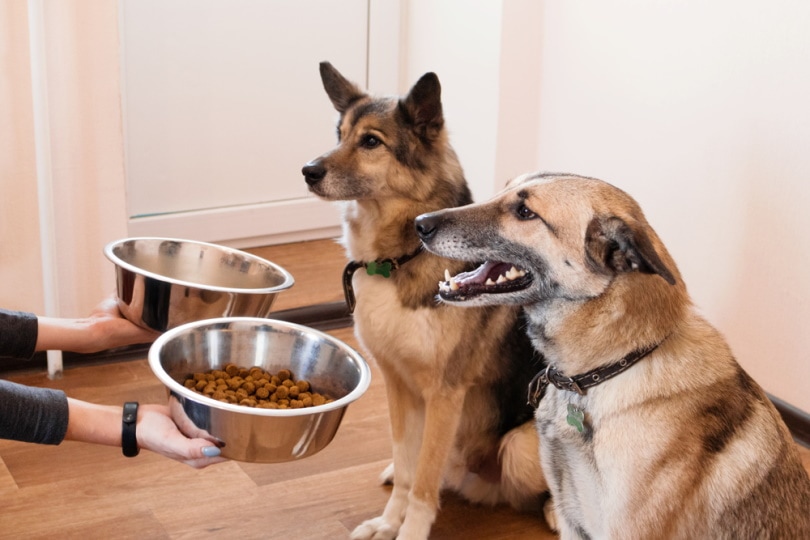
2. Con: Cost
As is the case with most specialty diets for dogs, freeze-dried diets are quite pricey. Unless you’re feeding a 5-pound dog, you can expect to spend a pretty penny every month feeding your dog. At this time, there aren’t really any budget freeze-dried food options. Even the less expensive brands will cost significantly more than your average dog food when it comes down to it.
The cost of these foods is due to the high-quality ingredients, nutrient density, and manufacturing processes that are required to make freeze-dried food as safe as possible. In fact, the process of freeze-drying is so time-consuming that it may make the food more expensive than pre-made raw diets.

3. Pro: Long Shelf Life Before Opening
Having a long shelf life is a benefit to any type of dog food. A long shelf life means you don’t have to worry about your dog’s food going rancid or becoming unsafe in a short period. Wet food has the shortest shelf life once open, but it has a longer shelf life than dry food when unopened. The longer the shelf life, the longer your dog’s food will be before opening, which gives you the option to stock up when your dog’s food is on sale. Freeze-dried dog foods have an unopened shelf life of 1–5 years.

4. Con: Short Shelf Life Once Open
Although freeze-dried dog food has a long shelf life before opening, its shelf life once open is relatively short. Most freeze-dried dog foods should be used within 4 weeks of opening, but this does vary between foods.
Make sure to check the manufacturer’s recommendations on any freeze-dried food to determine how long it will stay safe and healthy once open. Freeze drying removes around 98% of the moisture of the food, but once it’s exposed to air, moisture from the environment will get into the food, which is what gives it such a short shelf life. By comparison, regular kibble is good for around 6 weeks after opening.
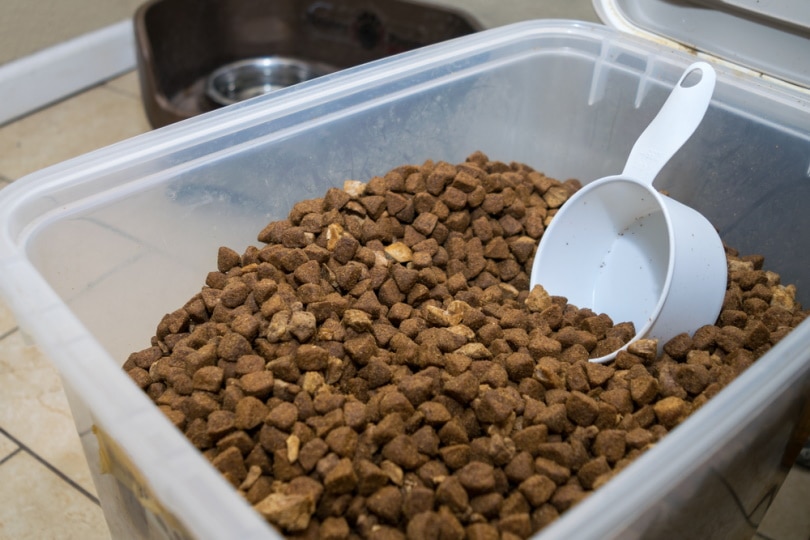
5. Pro: Texture Options
Most freeze-dried dog foods are really easy to feed to your dog. The label will tell you exactly how to feed the food to your dog. Some freeze-dried foods are intended to be fed as-is, while others may recommend or require rehydration. This allows you to choose a food that will be the texture that your dog prefers.
Freeze-dried foods also tend to be softer than kibble, which may make them easier for dogs with missing teeth, dental disease, and oral pain to eat.

6. Con: Unique Texture
While this isn’t a major con, it may be a big deal if you have a dog that’s picky about food textures. The texture of freeze-dried food is very different from kibble, wet food, and a raw diet. If your dog is picky about texture, they may not take well to the unusual and unique texture of this type of food. It may take some experimentation with preparation and mixing with a texture your dog is used to in order to help them transition.

7. Pro: Nutrient Density
The process of freeze drying is a slow process that is intended to maintain the nutrition of the food. Freeze-dried dog food is one of the most nutrient-dense food options because of this preparation method. Cooking can denature proteins within foods and remove nutrients, but freeze drying maintains these nutrients, ensuring your dog gets maximized nutrition from their food and that they aren’t left short on any essential nutrients.
8. Con: Safety Concerns
With any type of raw food, there is a risk of food-borne illness related to bacteria. Traditional food preparation methods, like baking and roasting, are often enough to remove most or all of the potential pathogens within a food, and kibble and canned foods are the safest food options for your dog. Since freeze-dried foods aren’t cooked, they are at risk for bacterial growth, so there is a risk of food-borne illness for you and your dog.
Raw and freeze-dried diets are not recommended for dogs that are immunocompromised, and these diets are also not recommended in homes with small children, elderly people, and people who are immunocompromised. Always wash your hands well before and after handling your dog’s food, and make sure to disinfect any surfaces your dog’s food comes in contact with.


High Pressure Pasteurization
While there are some safety issues associated with freeze-dried foods, many companies have begun to implement extra safety measures in their food preparation. High-pressure pasteurization is different from traditional pasteurization, which uses high temperatures. HPP is a cold-temperature method of food preservation that reduces pathogens in food and also reduces the rate of food spoilage.
This preservation method isn’t specific to pet food, and it’s commonly used with prepared foods for people, like hummus, guacamole, baby food, meats, seafoods, and sauces. If you’ve ever been in the grocery store and wondered how the apple slices and guacamole haven’t browned, then you’re likely looking at food that has undergone HPP.
While HPP does increase the safety of freeze-dried dog foods, it isn’t a guarantee. Studies have indicated that HPP has no effect on Clostridium botulinum spores, the pathogen responsible for botulism. While this type of illness is uncommon in dogs, it poses a significant risk to humans.
Final Thoughts
There are multiple pros and cons to freeze-dried dog foods, so you’ll need to weigh them carefully before transitioning your dog. Your vet or a board-certified veterinary nutritionist will be able to help guide you in choosing the best food for your dog. Consider your dog’s needs and preferences when selecting any food, and make sure that your dog’s food is nutritionally complete to keep them healthy. If you transition your dog to a freeze-dried diet, you must take all necessary safety precautions.
Featured Image Credit: Anna Hoychuk, Shutterstock

